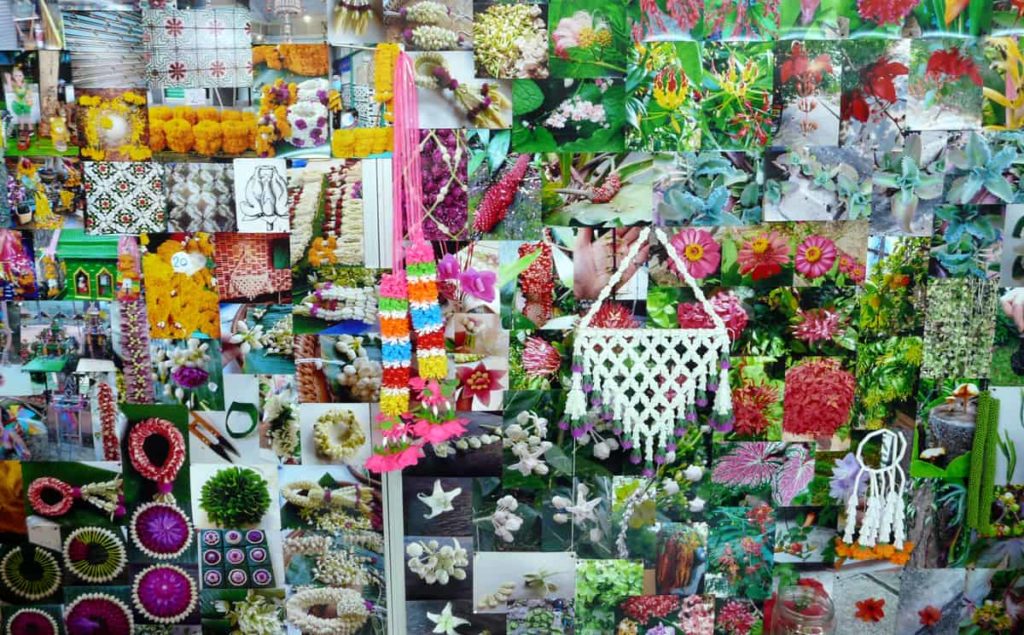
The world is beginning a lockdown that may last for months, if not for a year. In planning for life after coronavirus, Garland will track new models for craft practice in a brave new virtual world.
“You can cut all the flowers but you cannot keep spring from coming.” Nelson Mandela
As the world is beginning a lockdown that may last for months, if not for a year, it is important to use this time in planning for the future.
Already, the replacement of physical gatherings with video-conferencing has shown how much of our travel was redundant. While this is beneficial for the knowledge industries, such as education, it is challenging for the crafts, which rely on physical shops, markets and fairs to generate income through sales.
We can partly address this by encouraging online sales of craft products. We are doing this in Garland with the Ring, a registry of craft e-commerce sites. This may not be successful in the short-term as few people will be buying much beyond necessities, particularly toilet paper. But shopping habits are likely to change during the lockdown and we need to be sure that craft can be found on the shelf.
But we need to think carefully about the other impact of screen meetings. To an extent, we can still read the non-verbal cues through video that are necessary for maintaining the flow of conversation. But one obvious absence is the exchange of objects. Friends particularly will often bring something to a meeting as a small gift or token of affection. Foreign visitors will often have a bag of gifts to distribute when meeting important hosts. And of course, there are often more substantial presents offered for birthday gatherings. Many people choose a handmade product for these exchanges because they express the kind of care they feel represents their relationship.
Without product sales, how can craft be sustained?
In the Garland journey so far, we’ve noted the emergence of the experience economy, particularly in tourism. Here workshops offer to teach visitors a specific skill that enables them to make an object themselves, that they can take home. This is often combined with the chance to imbibe the spirit of the workshops, its slow sense of time and even some ceremony.
So how can the craft experience economy migrate to the small screen?
Our plan during the lockdown is to track new models for craft sustainability. This page will be updated as they come in. You are welcome to contribute in the comments below.
1. Masters of the screen
Already, a number of craftspersons offer video demonstrations for a fee.
 Example: Online masterclasses
Example: Online masterclasses
The Australian Ceramics Association has been a pioneer in providing craftspersons with the opportunity to sell their knowledge through online masterclasses.
So far, these have been for fellow practitioners. One challenge is to think of how skills might be modified to appeal to the general public, without access to the specialist tools and materials. There is also competition from the plethora of free YouTube videos where so many now are learning their craft techniques. The key is likely to be in the webinar format, where a live video feed enables personalised interaction with the makers.
2. Storymaking
For most, survival during lockdown involves binge-watching series. This speaks to the enduring value of narrative in our sense of well-being. Binge-watching can be entrancing when you’re in the middle of it, but it often leads to a sense of unreality afterwards. The kinds of spooky scenarios favoured by Netflix can lead to a strong sense of disconnection from the world. But stories in the form of parables or life lessons can be very important for grounding us.
Craft can be a wonderful medium for telling a story. The tale unfolds with a material stage in the making of the object or the ekphrastic telling of the story embodied in the design (see Phad paintings).
Again, the live video feed can be very valuable here. A story passed on to someone directly can be very powerful. You can add on to that the possibility of sending the object that tells the story through the mail afterwards, as a memento.
 Example: #DistanceBetweenUs
Example: #DistanceBetweenUs
Through its #DistanceBetweenUs program, Multicultural Arts Victoria offers employers an opportunity to hire artists as performers and storytellers to narrowcast to their workers, who may be suffering poor morale in the home environments.
3. Behind the bench
One of the attractions of the workshop is visiting the world of the maker. Craftspersons often live in what seems to be idyllic locales, surrounded by nature. They can often also have wonderful collections of objects. A personal tour with a phone camera is certainly one possibility.
 Example: Sydney Edible Garden Trail
Example: Sydney Edible Garden Trail
Bridget Kennedy has been conducting Sydney Edible Garden Trail tours and has now made this available as virtual experiences in the form of live feeds.
4. Micro-crafts
There have been many platforms for micro-hiring for one-off tasks, such as Upwork and Air Tasker. There is potential to hire craftspersons for bespoke commissions, such as designing birthday decorations. This may not be relevant during serious lockdown, but we can see already the emergence of these platforms as creative practitioners face a sudden and frightening loss of income.
 Example: ArtTaskers
Example: ArtTaskers
Artists are invited to post their skills in a Facebook group called ArtTaskers for others to utilise.
5. Solidarity
The craft community itself is a significant source of support. This can involve the simple sharing of hashtags, like #spreadartnotviruses, or the pledge to purchase work from other craftspersons, such as Craft Council UK’s #makersupportpledge
 Example: Clay for Clay Community
Example: Clay for Clay Community
Following the successful campaign to support ceramicists affected by the bushfire crisis (Clay for Australia), ceramicist Vipoo Srivilasa has set up a hashtag #clayforclaycommunity for the ceramics community to support each other through mutual sales.
The world will not be the same after coronavirus. There is likely to be much less global trade, as we strength local supply chains. But Garland is keen to encourage experimentation with new models of craft practice which might flourish in this brave new virtual world. Whatever happens, spring will come.
The above image is from the article by Jess Dare about her residency in Thailand, learning how to make garlands.
Lockdown responses
See below our collection of projects designed to deal with the challenges of isolation and lockdown. They include remote engagements, online projects and fundraising. Your patronage would be greatly appreciated.


Comments
Thanks Kevin.
Such thoughtful and thought provoking ideas, links and tips. As a maker I love the acknowledgement of the desire of makers to support sales of each others work, such as #makersupportpledge and #clayforclaycommunity wonderful!
Good to see Adrienne Kneebone offering basket-weaving classes online – https://adriennekneebone.weteachme.com/classes/1034811-wild-grasses. Craft Victoria are offering tours of craft studios around the world – https://vimeo.com/407915792 and Artisan have a project for making masks – https://artisan.org.au/blogs/artisan-journal/aboutface.
This is very timely for post-pandemic activities.
Are you looking for help with chemistry? At Tutero, we will connect you with an online chemistry tutor and provide you with targeted resources to help you thrive.
https://www.tutero.com.au/subjects/chemistry